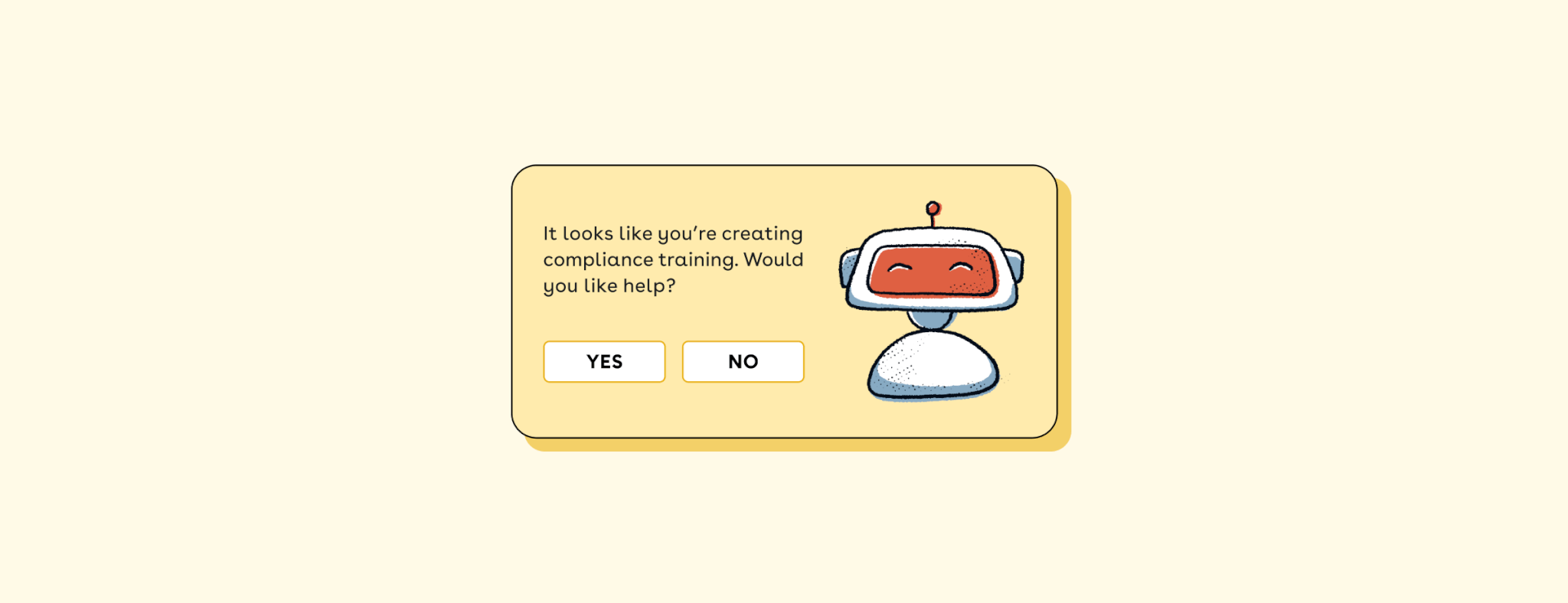Employee terminations are an often icky (but let's face it: inevitable) part of the HR role.
Whether due to performance issues, restructuring, or other reasons, these decisions are challenging for both the departing employee and the HR professional managing the process. When it comes to navigating these delicate conversations, it's critical to prioritize respect and privacy to uphold the dignity of the departing employee, while also safeguarding your company's reputation.
In this guide, we'll explore how to pressure test the decision to terminate an employee, and provide a step-by-step checklist you can refer back to any time you need it.
Let's get to it.
When is terminating an employee the right decision?
When exploring whether or not you should part ways with an employee, both you and the employee's manager/supervisor must work together to ensure fairness and the best interests of all parties involved. So if you're thinking about terminating an employee but haven't made the decision just yet, consider the following:
- Performance history: Analyze the employee's performance objectively. Consider their productivity, quality of work, and overall adherence to policies and procedures. Document any performance issues (including feedback, warnings, and improvement plans) to provide a thorough assessment of the employee's performance over time.
- Behavior and conduct: Assess the employee's behavior and conduct in the workplace, including interactions with colleagues, adherence to company values, and compliance with ethical standards. Evaluate whether any behavior or conduct breaches company policies or creates a hostile work environment.
- Discrimination and retaliation: You want to be absolutely sure that termination decision is based on legitimate reasons related to performance, conduct, or business necessity — not discriminatory factors like race, gender, age, or disability. In many states, it's illegal to retaliate against employees who have engaged in protected activities like whistleblowing or filing harassment complaints.
Employee termination checklist: how to terminate an employee
Employee termination is a challenging (and sometimes exhausting) aspect of HR that requires careful planning, communication, and empathy. While termination can be a necessary step in addressing certain issues, it's important to conduct the process with respect, fairness, and professionalism.
Below is our step-by-step checklist for terminating an employee in a way that prioritizes the best interests for all involved.
Before the termination meeting
When initiating a termination, be sure to thoroughly prepare for the conversation. We recommend taking the following steps:
- Prep the manager: Give your manager an overview of how the live discussion will go — especially if this is their first termination. Be clear about what role you’ll play, what role they’ll play, and what steps to take if the conversation goes awry.
- Coordinate with other teams: Pull in IT, Finance and Legal as needed to be aware with appropriate advance notice so they can do their part in preparing for the termination.
- Compile paperwork: Prepare a termination letter outlining effective date, details of final pay and benefits, and any non-compete or confidentiality agreements. Include information on COBRA (continuation of health insurance), and if separation pay is on the table, draft a separation agreement.
- BYOS (Bring Your Own Script): As the HR rep, make sure you’re well prepared to answer any logistical questions, including details around final pay and benefits.
During the termination meeting
The termination meeting should be conducted in a private and neutral setting, with both you and your manager present to provide support to the departing employee.
- Prioritize privacy and dignity: Conduct the meeting in a private setting, where distractions are minimal and the employee is free to express their emotions.
- Keep it brief: Have your manager begin the call by sharing the unfortunate news that they are being terminated. Focus on sharing a brief reason for termination.
- Do an EQ check: Pause and ask the employee if they’re okay for you to walk them through next steps. Offer them a moment to collect themselves, if needed.
- Run through logistics: Review the termination letter and answer any questions the employee may have. Explain the process for returning company property. Lastly, remind them that all this information will be provided to them in writing and that you’ll be available to answer any follow up questions.
You might want to consider having the manager leave the discussion once you take over to discuss logistics — including payroll, benefits, and account access.
Help! What do I do if the discussion goes awry?
If the employee becomes belligerent or tries to refute the decision, remind them that the purpose of this meeting is to communicate a decision that’s already been made, not explore whether or not you’ll be terminating them.
If the employee persists with inappropriate behavior, politely end the discussion and let them know you’ll follow up with additional details.
After the termination meeting
Following the termination meeting, you should follow up with the employee to provide ongoing support and assistance during their transition out of the organization.
- Collect company property: Retrieve all company property, including laptops, phones, badges, and any other equipment. If remote, send a laptop box and shipping label with instructions to their home address.
- Remove access and permissions: Work with IT to disable the employee's access to company systems, email, and remote logins. Update internal directories and phone lists.
- Process final pay and benefits: Terminate the employee on your internal employee portal (PEO or HRIS), and process the final paycheck according to company policy and legal requirements. Provide information on COBRA continuation options for health insurance and handle any accrued vacation time or paid time off.
- Record and maintain all documents: Maintain all termination documents, including the termination letter, signed paperwork, and any communication regarding the separation.
- Inform remaining team members: It helps to communicate the departure to those who are most impacted. This is typically a fast-follow to the individual’s direct team and (if standard for your organization) the rest of the business.
The final word
Employee terminations are challenging situations that require HR professionals to navigate with empathy, professionalism, and discretion. But by prioritizing respect, privacy, and directness during the termination process, we can uphold the dignity of the departing employee while safeguarding our companies' reputations and fostering a more positive work environment.
About Ethena










